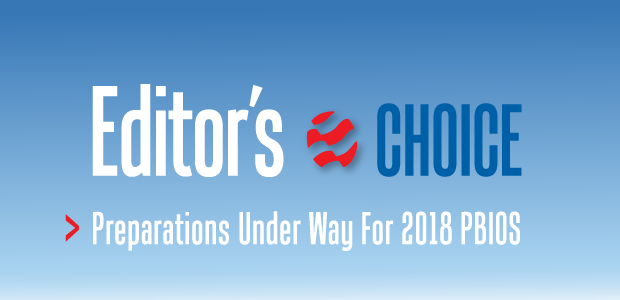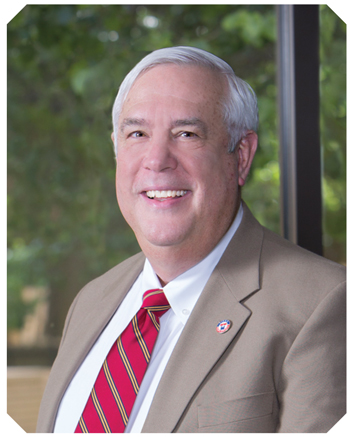
Preparations Under Way For 2018 PBIOS
By Anthony “Tony” Fry
ODESSA, TX.–The Permian Basin is making history, again.
IHS Markit reports that the Permian achieved an oil production record in 2017, eclipsing by at least 25 million barrels the historic peak of 790 million barrels set all the way back in 1973. Few would have guessed at the time that oil output in the region was about to begin a decades-long decline, and no one could have imagined production soaring to an all-time high 44 years later on the strength of unconventional horizontal plays in the Midland and Delaware sub-basins.
With IHS Markit and many others predicting that liquids production in the “super basin” will continue to edge upward in 2018, all eyes remain on the Permian. The timing could hardly be better for the industry to convene deep in the heart of West Texas activity at the Permian Basin International Oil Show, scheduled for Oct. 16-18 at the Ector County Coliseum and Fairgrounds in Odessa.
Preparations are well under way for the 2018 PBIOS. In keeping with our historical mission, we aim to provide attendees and exhibitors with the opportunity to renew business associations and friendships, and to see the latest demonstrations of technology that are driving a drilling upsurge in our own backyard that has made the Permian the hottest oil and gas basin in the world.
What began humbly in 1940 as the Little International Oil Show with 35 exhibits is expected to draw 30,000 attendees to view up to 800 exhibits. Since 1950, the show has been conducted biennially in even-numbered years. Our planning process for each show starts early. We begin initial preparations in July of the off-year and just after Labor Day send out contracts to exhibitors that participated in the previous show.
We endeavor to provide exhibitors ample time to review and sign contracts and request any desired changes during the review process. Receiving that information back in a timely fashion allows us to determine our inventory of exhibit spaces as we work to accommodate additional requests.
Around year’s end, we stop accepting contracts and begin to review space availability for those on our waiting list that have called us or filled out our online exhibitor application. With the successes in the basin that we have seen in 2017 and expect for 2018, many exhibitors want larger spaces.
In keeping with our historical commitment to the oil and gas industry and all the people who make it possible–from operators to service providers, roughnecks on the rigs, equipment vendors and pipeline crews–our show is managed by oil and gas people for oil and gas people. The 200-member PBIOS board and Executive Committee consist exclusively of folks who work in the industry and represent every facet of the upstream segment.
Guys In The Field
Among these committed folks are people such as Stephen Castle, 2018 PBIOS president. He is a lifelong industry participant whose career began with Mobil just out of college and included stops at independents Tom Brown and Hanley Petroleum before he launched in 1999 Midland-based Cowboys Resources Corporation, which takes nonoperating interest positions with oil and gas players throughout the basin.
Similar to all our board members, Castle, a former chairman of the Texas Independent Producers & Royalty Owners Association and the Permian Basin Petroleum Association, appreciates oil and gas employees at every level. He maintains an appreciation for our heritage as a region known for the up-by-the-bootstraps folks who made our industry strong and taught us the value of persevering through ever-changing cycles.
“I can relate to the guys in the field,” Castle says. “I have a hard hat and steel-toed boots in my pickup. I still go to the field when we are drilling, and love to see the new technology and the young people making it all happen.”
As of late December, the Permian Basin accounted for more than 40 percent of all U.S. rigs running. The upsurge in activity in Midland and Delaware tight oil plays continues to be driven by a rich reserve base that rivals that of the giant Ghawar Field in Saudi Arabia, according to IHS Markit, which places technically recoverable reserves throughout the basin at 60 billion-70 billion barrels.
Basinwide production from multiple stacked pays has doubled over the past five years. Companies are paying more than $20,000 an acre for drilling rights in some parts of the Delaware Basin. The Delaware’s oil-rich Wolfcamp and shallower Bone Spring formations have attracted most of the horizontal activity and extend from Reeves, Loving, Ward, Pecos and Culberson counties in Texas northward into Eddy and Lea counties in New Mexico.
“A few years ago, it would have been hard to imagine a Houston-style, freeway-like parking lot in Reeves County,” Castle says. “But that is exactly what we have on U.S. 285 both north and south of the city of Pecos. I personally never thought I would see that.”
Activity remains robust in the Midland Basin Wolfcamp play as well, but operators are having to wait longer for services basinwide, especially hydraulic fracturing services.
“A shortage of frac crews is a real problem,” Castle says. “We drilled some wells in September and October, and are treating them so we do not lose the hole while we wait on frac crews. We cannot get cement to cement the pipe quickly. It also is difficult to get tubing and other equipment.”
While midstream and pipeline infrastructure are in the works, there are still capacity bottlenecks to take away the high-Btu gas rich in alkanes such as propane, butane and ethane. “More hookups are available for oil, but not as much for wet gas with high-Btu content,” Castle states. “I am seeing more people install little stripper plants to remove some of these liquids on the leases rather than having to flare the gas.”
Large Endowment
While advanced technologies such as those to be displayed at PBIOS are driving the Permian’s resurgence, our good friend Jim Henry, founder of Henry Petroleum Corporation and a pioneer in Permian resource plays (and designated the honoree of the 2014 PBIOS), has said approximately 70 percent of the oil still will be left across the basin in another 40 or 50 years. That is how large the Permian’s resource endowment is.
“Our industry is highly capital intensive and highly labor intensive, but we are benefitting more and more from advances in technology that include the use of more robotics on drilling rigs,” Castle observes. “Hopefully, this trend will allow service companies to get together and learn how to extract more of the oil and gas resources in place in the basin.”
Both because of its prominent role in oil production and the fact that the Permian is a hub for developing new technology, the PBIOS has increasingly attracted the interest of foreign exhibitors and attendees alike. The show has an international appeal in the epicenter of a truly international oil and gas play. Numerous visitors from other countries come to see the latest technology and techniques that are reinforcing the basin’s appeal.
Visitors can see product demonstrations and perhaps learn more than they would in a simple chat with a salesperson during an office visit. Attendees also may learn about technologies or applications that they were unaware of previously.
A lot of our exhibitors are international companies whose products and services are available for oil and gas exploration, drilling, completion and production in a variety of geographical and geological climates. Exhibitors can make new contacts and follow up on potential sales after the show, making it worth their time and investment to be in front of people coming through the gates from our region as well as from around the world.
At PBIOS, we are not just looking to sell exhibit spaces. We want to invest in advertising to bring people to the show and make it pleasant for everyone involved in a casual, but exciting setting.
Our show is a nonprofit enterprise, dedicated to serving the industry we love. After we cover show costs, our board contributes scholarship funds to area colleges that provide industry-related education. The institutions know best whom to award scholarships to and have used our contributions to support students studying geology, engineering and other degree programs while also providing financial assistance to vocational students in welding, electrical and other curriculums that benefit the oil and gas industry in the region.
We are proud of the fact that since 2004, we have given $1.2 million in scholarship funds. Our thought is that we need quality people in the industry, and we will do our best to help get people educated to be assets to the industry. That way our mission continues to reflect the value we place on oil and gas people helping oil and gas people.

ANTHONY “TONY” FRY is executive director of the Permian Basin International Oil Show. He was named executive director in 2005, and is presiding over his sixth PBIOS in 2018. Fry is the owner of A.D. Fry Co. Inc. in Odessa, a manufacturer’s representative serving West Texas and Southeast New Mexico with industrial controls and analytical instrumentation since 1988.
For other great articles about exploration, drilling, completions and production, subscribe to The American Oil & Gas Reporter and bookmark www.aogr.com.







